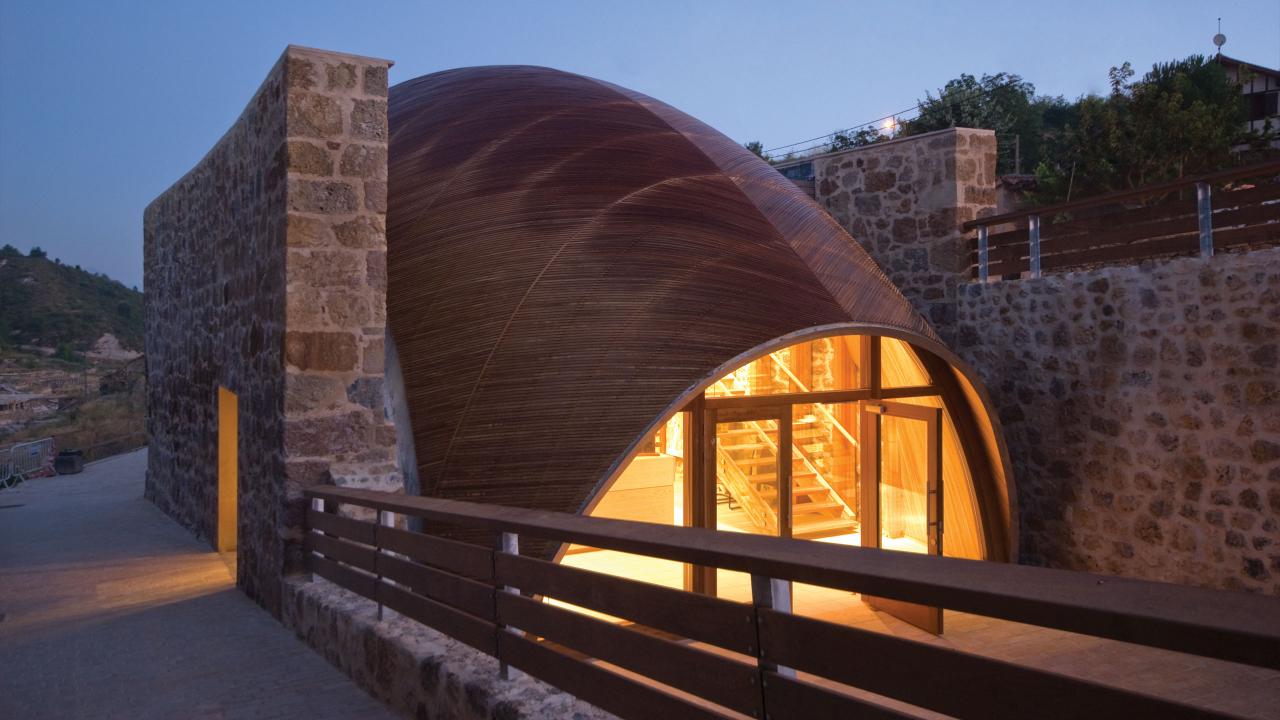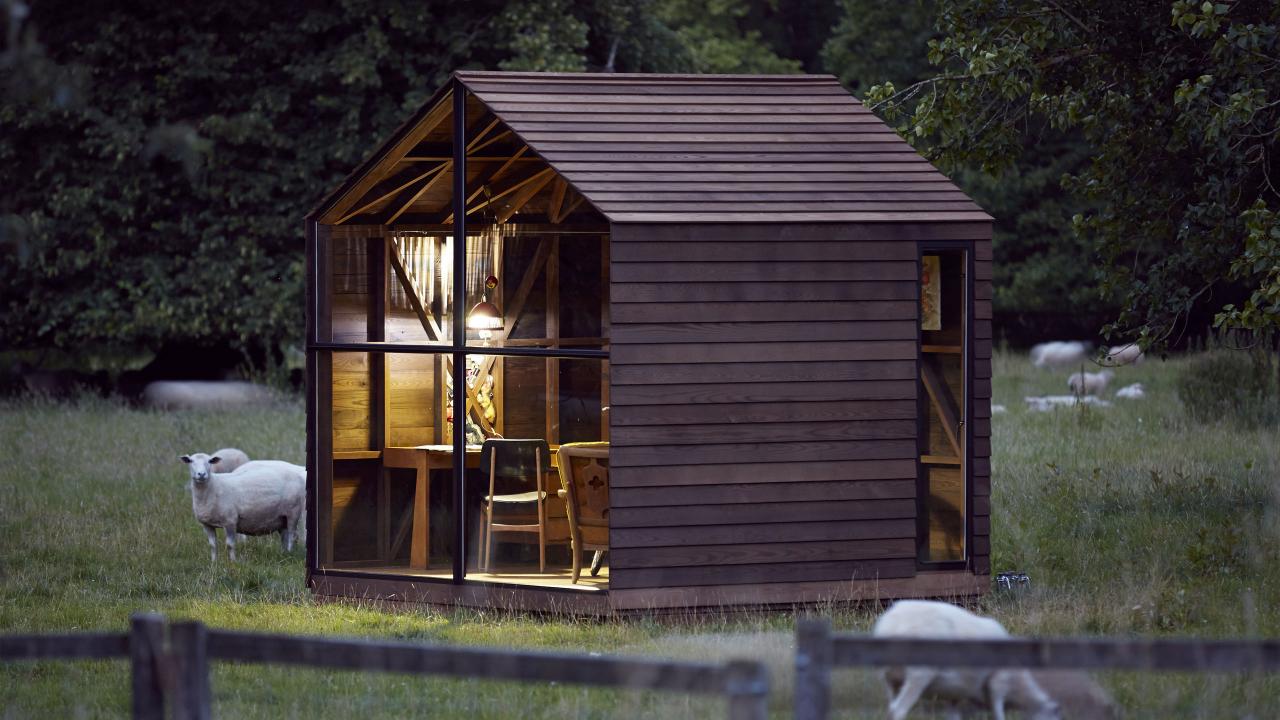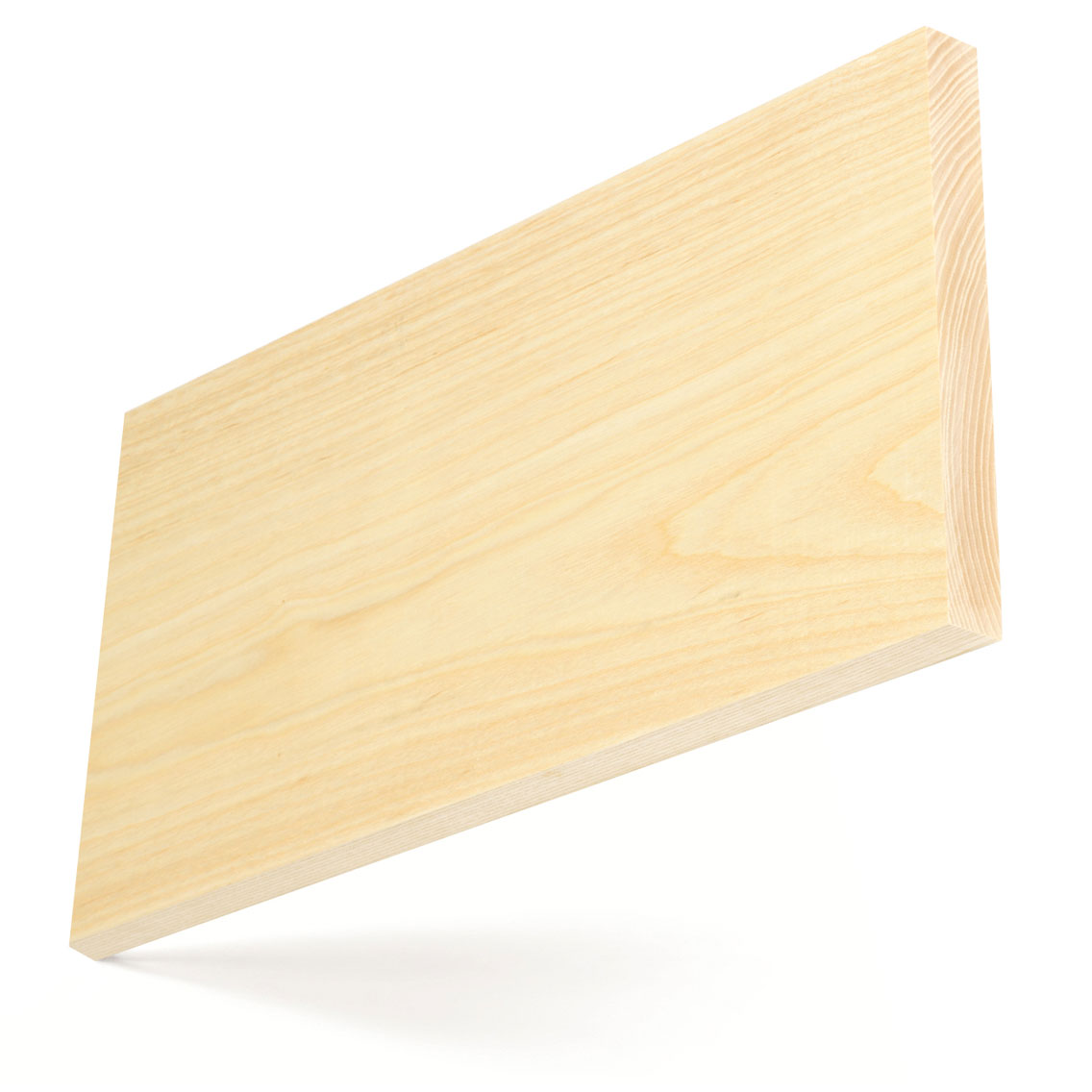-

-
MIT MAT MAMA
Architect Román Izquierdo Bouldstridge was commissioned to design a store front for maternity brand Mit Mat Mama in Barcelona, Spain. He used American ash ladders as the main architectural element, together with plants and natural light.
-
-

-
Añana Saltworks
Añana Saltworks visitors' centre in Álava, Spain, combines the old and the new. American ash, with its light tone, willingness to bend and ease of machining was the architect’s hardwood species of choice for the striking ceiling.
-
-

-
WELL PROVEN CHAIR
Out of the Woods follows the creation of 12 hardwood chairs including this, The Well Proven chair, which was made using American ash.
-
-

-
PAUL’S SHED
Ten leaders in design commissioned ten emerging designers to create the object they have always wanted for The Wish List, a project initiated by AHEC. Paul’s Shed shown here, was the wish of Paul Smith, designed and made for him by Nathalie de Leval using thermally modified American ash. Its grade 1 durability rating makes it perfect for use outdoors.
-
American ash
American ash is ideal for bending and turning. It is strong and tough with distinctive grain, character and colour.
Latin Name
Fraxinus species, including Fraxinus americana
Other Common Names
northern ash, southern ash

Forest Distribution
American ash trees grow commonly throughout the eastern United States in mixed hardwood forests, from the north in New York State to the southern States along the Gulf of Mexico, and everywhere in between. They grow high in the mountains and low on the plains and coastal areas giving rise to great variety of character. With such widespread distribution in latitude, climate and soil conditions, there are significant variations in ash depending on location, in particular between the slower grown northern and faster grown southern trees. There are also sub-species that add to this variety. Despite some longer-term threats by forest pests and disease to the ash standing stock of timber, ash is a prolific species.
FOREST GROWTH
Forest Inventory Analysis (FIA) data shows U.S. ash growing stock is 657 million m3, 4.5% of total U.S. hardwood growing stock. American ash is growing 3.3 million m3/per year while the harvest is 6.9 million m3 per year. Net volume (after harvest) is increasing -3.5 million m3 each year. The 2014 inventory indicates that U.S. ash growth exceeds harvest in all major supplying states except Michigan and Ohio, which are central to the Emerald Ash Borer (EAB) infestation. Ash mortality rates and removals are expected to rise in the immediate future, likely in excess of growth in some states, due to the EAB infestation.
LCA Tool
seconds
Material Availability
- Ash from the USA is readily available as sawn lumber and veneer, in a wide range of grades and sizes. In the north the sapwood tends to be less due to the shorter growing season, than in the south where the wood is grown faster with more open grain and texture. Ash may be sold on the basis of colour and is widely available for export. Ash was the 4th major American hardwood species to be exported worldwide by volume in 2015.
- Ash lumber is available in a range of grades from 4/4” (1” or 25.4mm) through to 8/4” (2” or 52mm) although limited volumes of 10/4” (2.5” or 63mm) and 12/4” (3’ or 75mm) can be sourced.
Wood Description
- In general ash is a light coloured wood, with sapwood varying from white to yellow and heartwood light to dark brown, sometimes with lighter streaks. The colour difference between the outer light-coloured white sapwood and inner, darker, even brown heartwood is quite distinct. Ash wood is generally straight-grained with a coarse uniform texture. Its appearance has a very strong grain contrast between the softer summer growth and hard winter growth rings. No two pieces are ever the same in appearance.
- Light brown flecks, or mineral streaks, sometimes referred to as ‘glassworm’, are common in ash and are treated as a natural characteristic, and are not considered as a defect under the NHLA Grading Rules. They do not undermine the integrity of the wood.
Mechanical Properties
Ash wood has very good overall strength properties relative to its weight. It has excellent shock resistance, which takes some of the pain from those using hand tools and sports equipment, such as baseball bats. It steam bends very well, so is a favourite of furniture makers and hobbyists. Being very hard, stable when dry and easy to finish and stain, it is ideal for furniture and flooring.
To find out more about the mechanical properties of ash read the full structural guide.
-
0.6
Specific Gravity (12% M.C.)
673 kg/m3
Average Weight (12% M.C.)
10.70%
Average Volume Shrinkage (Green to 6% M.C.)
103.425 MPa
Modulus of Rupture
11,977 MPa
Modulus of Elasticity
51.092 MPa
Compressive strength (parallel to grain)
5,871 N
Hardness
Oiled / Un-Oiled Appearance


Performance
Ash lumber machines well, with good performance in nailing, screwing, gluing and can be stained and polished to a very good finish. Black stained ash has experienced several successful fashion cycles in furniture. The wood dries fairly easily with minimal degrade. With good stability there is not much movement in performance. Ash veneer laminates well to board materials. Ash is not resistant to heartwood decay and the heartwood is moderately resistant to preservative treatment, but the sapwood is permeable. This makes ash very suitable for being thermally modified, as has now been proven through its widespread use for decking, cladding, worktops and garden furniture.
Main Uses
This sustainably managed wood from natural forests of North America, with its excellent environmental credentials, is popular with designers, architects, specialist users and consumers around the world. Its main uses are furniture, flooring, doors, architectural joinery and mouldings, kitchen cabinets, tool and sport handles.